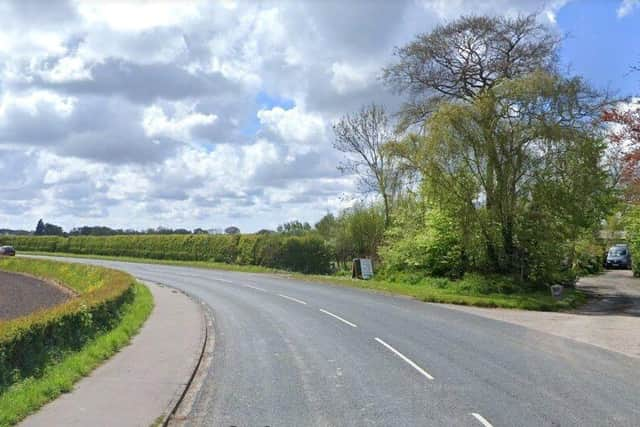Average speed cameras: Lancashire County Council issues update on new devices for the region's roads
and live on Freeview channel 276
Lancashire County Council last year received a £7.9m grant from The Road Safety Foundation - and decided to spend £5m of it on installing the speed-deterring devices on its highest-risk A-routes. Five of them are in the top 50 in England - and two in the top ten.
Where are the cameras being put?
The kit is already in place at one of the locations - on the A581 between Rufford and Euxton in Chorley - and is progressing at the other identified sites, which a cabinet meeting last year heard should all be operational during the first half of this year.


Advertisement
Hide AdAdvertisement
Hide AdTrench-digging is under way for the installation of the next set of cameras in the project - on the A588 between Lancaster and Skippool, one of those Lancashire roads in the top ten blackspots nationwide.
That scheme will be followed by others on the A683 in Lancaster from junction 34 of the M6 to Kirkby Lonsdale, the other county route in the ten most high-risk in England; the A6 in Lancaster between the city centre and J33 of the M6 motorway, and the A682 in the Ribble Valley from Gisburn to the boundary with North Yorkshire at Long Preston.
Average speed cameras have been in use on several of Lancashire’s busiest roads for five years - including the A6, London Road, in Preston and the A583, Blackpool Road, in Fylde - to identify vehicle speeds over a wide area, rather than at a fixed point.
They aim to encourage consistent compliance with speed limits rather than adherence just at the moment when a motorist passes a standalone camera and have resulted in an 86 percent reduction in collisions on the Lancashire routes on which they have already been installed.
Advertisement
Hide AdAdvertisement
Hide AdA period of testing will be undertaken after the latest cameras are installed before they are used by the police for enforcement.
What about the speed limits?
Speed limits have also been reviewed on the routes - on longer stretches than those that will be covered by the new average speed cameras.
Cabinet gave the green light to reduced maximums of 50mph - where 60mph had previously been the top speed - on sections of the A588 around Pilling, Cockerham, Thurnham and Lancaster; parts of the A683, including between Caton and Burrow; and sections of the A6 around the Tollbar junction at Claughton and the traffic lights at the Croston Road junction in Garstang.
Some respondents to the public consultations into the plans last year called for limits to be lowered even further, while others sought to preserve the so-called ‘national speed limits’ currently in place.
Advertisement
Hide AdAdvertisement
Hide AdHowever, highways officials decided not to deviate from any of their original proposals. They said of the revised limits on the A588 - one of the ten most dangerous routes nationwide - that the reduction “balanc[ed] the need to improve road safety, but also to provide for the reasonable movement of traffic”.
Fellow top ten blackspot, the A683, was said to benefit from a 50mph limit on stretches with a “higher prevalence of bends, junctions and other highway features, including adjacent development, together with increased traffic volumes”. However, the national speed limit has been retained for those sections which do not meet that criteria.
Meanwhile, on the relevant stretches of the A6 around Claughton and Garstang, where parish councillors had called for 40 or even 30mph limits because of the level of housing development in the area, highways bosses said that the new dwellings were “predominantly contained behind high boundary hedges and on separate access roads”, meaning that the main road “would not meet the requirements” for a reduction below 50mph.
Speaking about the resumption of the installation work in the new year, County Cllr Rupert Swarbrick, cabinet member for highways and transport, said: "We have received funding from the Department for Transport to install more average speed cameras in Lancashire as part of a national programme aimed at improving safety along the 50 most dangerous stretches of A-roads in England.
Advertisement
Hide AdAdvertisement
Hide Ad"These routes have a record of deaths and injuries where excess speed was a factor, and people who live near these roads worry about when the next serious incident will happen, and whether they or their family and friends could be affected.
"We've already done a lot of work to make the five routes in Lancashire safer as part of the Safer Roads Programme, such as installing LED cats eyes, high reflectivity road markings, signs and crash barriers. I look forward to the average speed cameras going live in the coming months and making these routes much safer for everyone in future."
